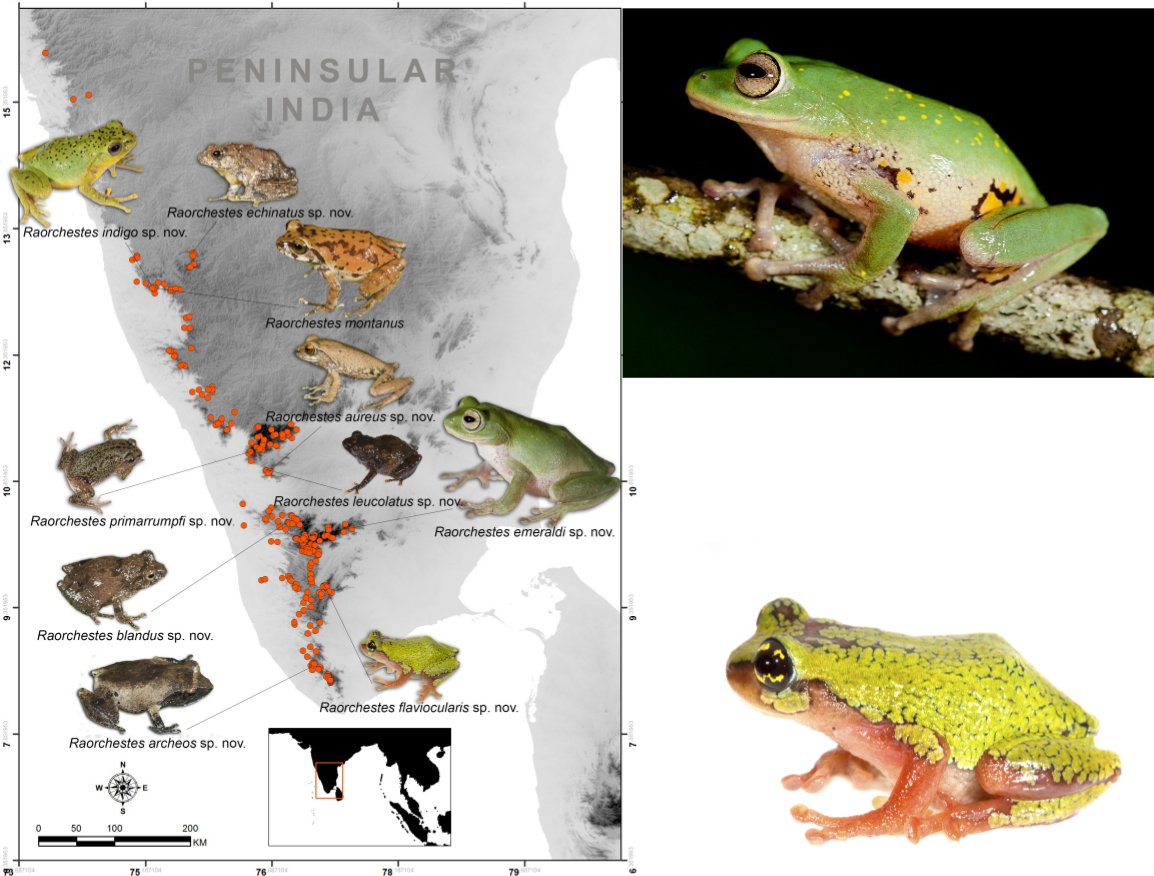Its raining bush frogs in the Western Ghats by Kartik Shanker and SP Vijayakumar
Thu, 2015-01-08 14:13
Its raining bush frogs in the Western Ghats
Kartik Shanker and SP Vijayakumar
Should you find yourself wandering in the cloud-drenched mountains of the Western Ghats, you would be engulfed by a cacophony of frog calls. Many of these will be bush frogs, a group of miniature frogs distributed throughout south and southeast Asia. Some are so small that they can be accommodated on your thumbnail!
Bush frogs of the genus Raorchestes, a part of the tree frog family Rhacophoridae, are distributed mainly in the Western Ghats of Peninsular India, one of the major biodiversity hotspots in the world. When KS (the older one ) worked in the Upper Nilgiris in the 1990s, just over 10 species were known from this group in the entire Ghats, and no one could tell them apart. By the time SPV (the younger one) began his PhD in 2006, there were over 30, and over the next few years, another 10 were added. Though many new species had been described, it was likely that there were more –including ones that could not be distinguished just on the basis of morphology.
As part of his PhD, SPV sampled these frogs from all over the Western Ghats, explicitly incorporating the topographic and ecological variation of the region. We then used a combination of molecular genetic data, geographic range, morphology and acoustics to separate the frogs into lineages. Using this novel method, we were able to delineate more than 20 potential new lineages, which have separated from each other to different extents. Populations of two species, known only from historical records were also relocated.
In our paper published in the journal Zootaxa, along with Dr. KP Dinesh and Mrugank Prabhu, we describe nine new species that are markedly different along multiple axes.ie., genetics, morphology, acoustics and geography. The fact that so many new lineages were discovered across the major “massifs” (such as Agasthyamalai in Kerala, Anaimalai and Nilgiris in Kerala and Tamil Nadu, and Kudremukh in Karnataka, amongst others) was a clear indication that these frogs have not been studied sufficiently.
The title of our larger CEPF project on herpetofaunal distributions “Addressing the Wallacean Shortfall in the Western Ghats” symbolizes the importance of Alfred Russell Wallace and his contribution to biogeography: it underscores the importance of understanding geography for sampling little known groups and is critical in determining distribution patterns. Additionally, knowledge of geography was central to discovering and delineating species boundaries in this tropical biodiversity hotspot.
While the discovery of new species for groups such as frogs in a poorly studied region is not surprising, this is a step towards understanding the ecological, evolutionary and biogeographic processes of diversification that have led to this spectacular diversity and endemism, and towards working out strategies for conservation.
The project was funded by the Critical Ecosystem Partnership Fund (CEPF) and Council for Scientific and Industrial Research (CSIR – India) and supported by the Kerala, Karnataka and Tamil Nadu forest departments.
About the authors
Kartik Shanker is Associate Professor at the Centre for Ecological Sciences, IISc.
Vijaykumar SP was a PhD student at CES, IISc and is currently a postdoctoral fellow at the National Centre for Biological Sciences.
Dinesh KP is a postdoctoral fellow and Mrugank Prabhu a Project Assistant in Kartik Shanker’s lab.
Contact: vijay_rhaco@yahoo.com; kshanker@gmail.com
The paper appeared in the journal Zootaxa

Add new comment